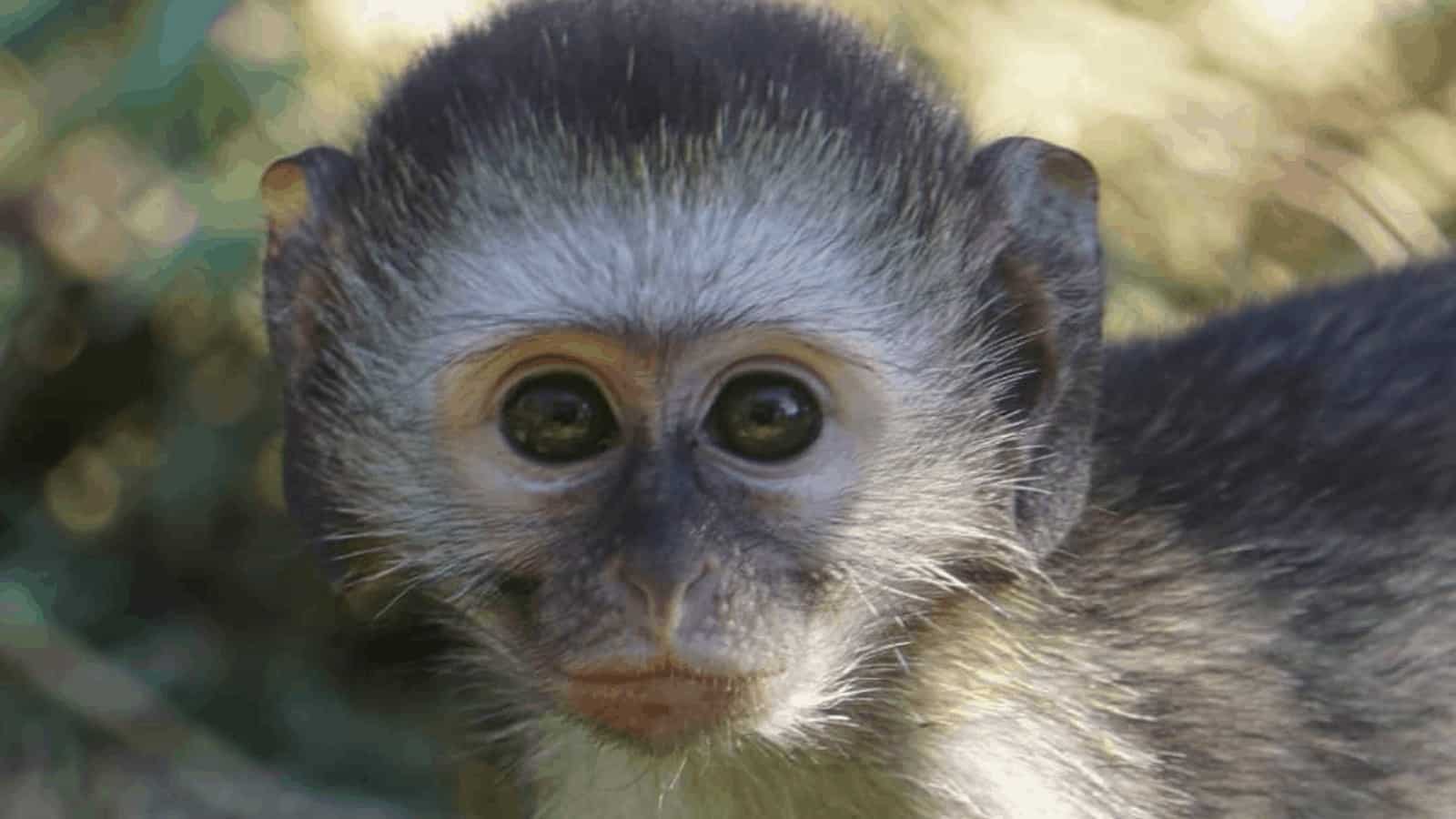While vervet monkeys haven’t been classified as endangered, they have started to disappear gradually due to human activities. Found in East and Southern Africa, these monkeys tend to live in areas up to 4,000 meters in altitude. However, the ones living close to civilization have been viewed as pests by humans, unfortunately.
In order to save some of these beautiful creatures, the Vervet Monkey Foundation provides a sanctuary for orphaned and injured primates.
The vervet monkey rescue is saving this creature
Dave Du Toit founded the non-profit organization in 1993 after discovering an orphaned baby monkey and asking authorities what to do with it. Sadly, they had been euthanizing the monkeys because the public viewed them as pests, and no facilities existed to care for them. Since Dave had a love for nature and the outdoors, he decided to open a sanctuary so the vervet monkeys could live in peace.
“From that day on, it was a big fight to try and save these animals and make sure they had a place to go, and to give them a second chance at living in freedom back out in the bush,” Dave said.
So far, the sanctuary has provided a home for more than 500 orphaned, injured, abused, and abandoned primates. Located in Tzaneen in the Limpopo Province of South Africa, the organization also gives volunteers opportunities to learn and work with the monkeys. Many people come from all over the world to help rehabilitate and care for the vervet monkeys. No prior experience is necessary, but you must be over 18 and commit to at least 4 weeks of service.
“Our main goal for our organization is to basically try and make people a lot more aware about wildlife, and that every animal has a place on Earth and a right to live on Earth,” Dave said.
While it requires a lot of time, effort, and resources to keep the foundation running, seeing the monkeys thriving makes it all worth it.
Providing a high quality of life for these creatures
“It doesn’t matter how hard and how tough our days are and how we battle – at the end of the day, just seeing these little guys being happy in their own little way and being back with other monkeys playing in trees – that’s amazing.”
The VMF designed a unique rehabilitation program over the years which helps reintroduce and reacclimate monkeys to the wild. They utilize large enclosures which help monkeys naturally form troops, or families, in preparation for release into the wild. Orphaned vervet monkeys can easily assimilate into this system, and return back to a wild state within just 4-8 weeks. The VMF introduces the babies to females already living at the sanctuary to help them return to a natural way of living.
Dave loves being able to watch the monkeys thrive again after coming from sometimes tragic circumstances. Some monkeys have been abused, abandoned, or even used in laboratory experiments. When they first come into the program, many of them are scared, traumatized, and grieving about losing their families. However, when the team begins working with them slowly, they start feeling comfortable in their new environment and quickly make friends.
Vervets are shy monkeys at first
Once they warm up to their new surroundings, they start to integrate themselves into troops and truly live as they were meant to. The vervet monkeys enjoy climbing trees, playing with the other monkeys, and just living in their natural environment.
“I think the reward of taking something that’s been displaced and putting them back where they belong is really amazing,” Dave said. He believes that we all should do our part to protect the Earth and make it a safe, thriving place for every species.
“Please look after what we’ve got. It’s disappearing at such a rate, and believe in me, it’s worth fighting for. It’s worthwhile protecting it and making sure there’s always spaces that you can go out and enjoy in the wild, and have natural areas.”
Not just monkeys, but all animals, including humans, need natural spaces to enjoy. Without nature, no species on Earth could exist, so Dave says “it’s very, very important to protect it.”
Here are a few facts about vervet monkeys, so you can get to know them better:
- There are 5 subspecies of vervets.
- They live in a variety of areas but are primarily found near bodies of water such as rivers, swamps, or lakes. They can also live in savannahs, open woodlands, and riverine forests. However, they do not live in deserts or deep forests. They mostly inhabit acacia-dominated environments.
- Vervet monkeys live in male-dominated, hierarchical groups of multiple males and females. They live in groups, called troops, which can include up to 120 monkeys. However, due to habitat loss, it rarely exceeds 30 in today’s world.
- Vervet monkeys live around 25-30 years.
- Unique characteristics of vervets include a black face, feet, and black-tipped tail, as well as mottled grey and white fur on its belly. Babies have pink faces until they slowly turn black at around 4-8 months due to sun exposure.
- Vervet monkeys are opportunistic omnivores.
Currently, the Vervet Monkey Foundation is working to purchase land in South Africa to release rehabilitated monkeys. The land would be a protected forest for the monkeys, which would keep them from conflict with humans. The VMF would also maintain the 300-500 hectares of indigenous plant and animal life, helping to cultivate a thriving ecosystem. In addition, this would create dozens of jobs and new opportunities for volunteers.
The foundation is working to raise enough money to purchase the land and pay for construction. If you’d like to donate or volunteer, you can visit their website for more information.

















